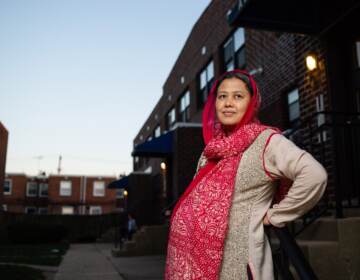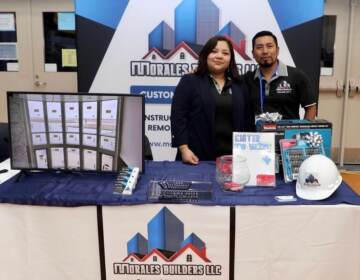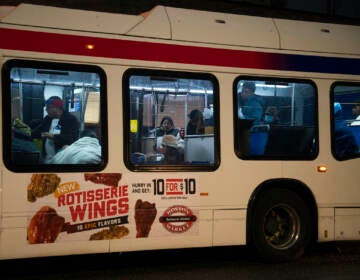Immigrants helped by The Welcoming Center in Philly are returning the favor
The Welcoming Center started by offering programs to help immigrants integrate in Philly. Now those immigrants are shaping its future.
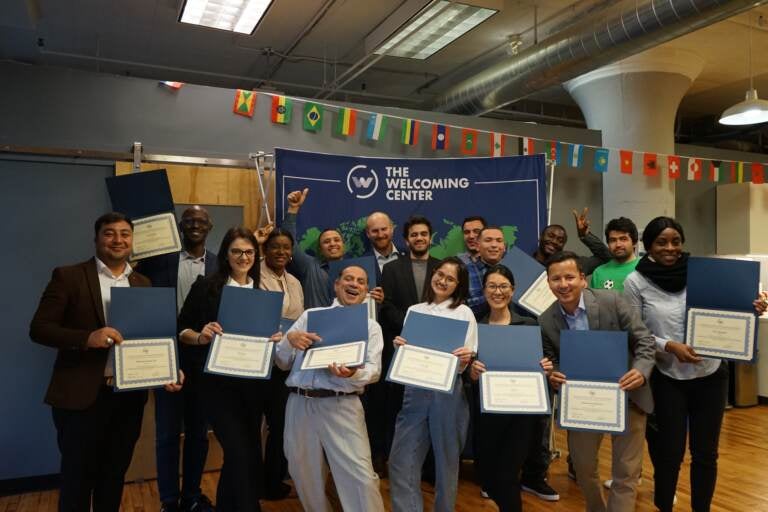
Participants in The Welcoming Center's International Professionals Program pose during a ceremony celebrating the program. (The Welcoming Center/Facebook)
During an earlier Philadelphia mayoral campaign in 1999, Anuj Gupta noticed that none of the candidates were talking about immigration. A public policy graduate student at the time, Gupta noticed Philadelphia’s population was shrinking as other cities were expanding with new immigrants.
“You’re coming off eight years of Ed Rendell. People are feeling positive about Philadelphia. There’s a sense of hope that this place can be turned around. And yet we lost nearly 5% of our population in the 1990s,” Gupta said. “That is a staggering number. You have a field of something like seven or eight candidates, all of them are talking about various plans for revitalizing the city. No one’s talking about immigration. No one. That is the primary form of repopulation for cities like Philadelphia at that time.”
“I thought we were — no pun intended — missing the boat,” he said.
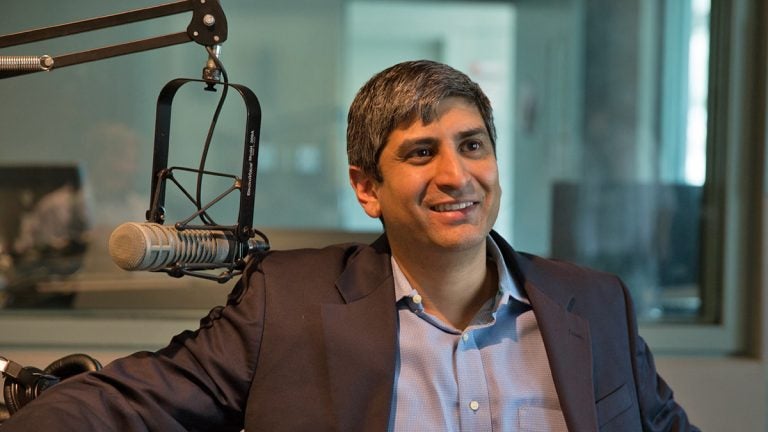
Gupta, who would later become the manager of the Reading Terminal Market and then chief of staff for Rep. Dwight Evans, wrote a paper about his research into Philadelphia’s immigrant population and shared it with Anne O’Callaghan, who had immigrated to Philadelphia from Ireland.
As a retired physical therapist, O’Callaghan was volunteering with new immigrants and saw many struggle to find help with language, job training, and small business assistance. She used Gupta’s paper to shape her new nonprofit, The Welcoming Center.
“The research was right on the mark for what she wanted to do,” Gupta said. “It helped her raise the initial seed capital that got the organization started.”
Two decades and three mayoral administrations later, Gupta is still not seeing candidates who keep immigration top-of-mind.
“I still don’t think city leadership fully understands the impact that immigrants are having in turning around neighborhoods, starting new businesses, and fueling economic opportunity,” he said.
The Welcoming Center is honoring Gupta with its annual Solas Award, along with retired president of the labor council AFL-CIO Patrick Eiding, who gave The Welcoming Center its first office space, and founder O’Callaghan herself.
O’Callaghan retired 11 years ago, replaced by Peter Gonzales who expanded The Welcoming Center with initiatives that help immigrants develop into civic leaders. Over the last 20 years the center has not only shown immigrants what the city could offer, but shown the city of Philadelphia what immigrants could offer.
“It’s not just about helping immigrants navigate their way towards economic opportunities,” Gonzales said. “It’s also helping employers and the broader community — the receiving community — recognize the importance of welcoming immigrants and learn some of the skills they need to do a better job.”
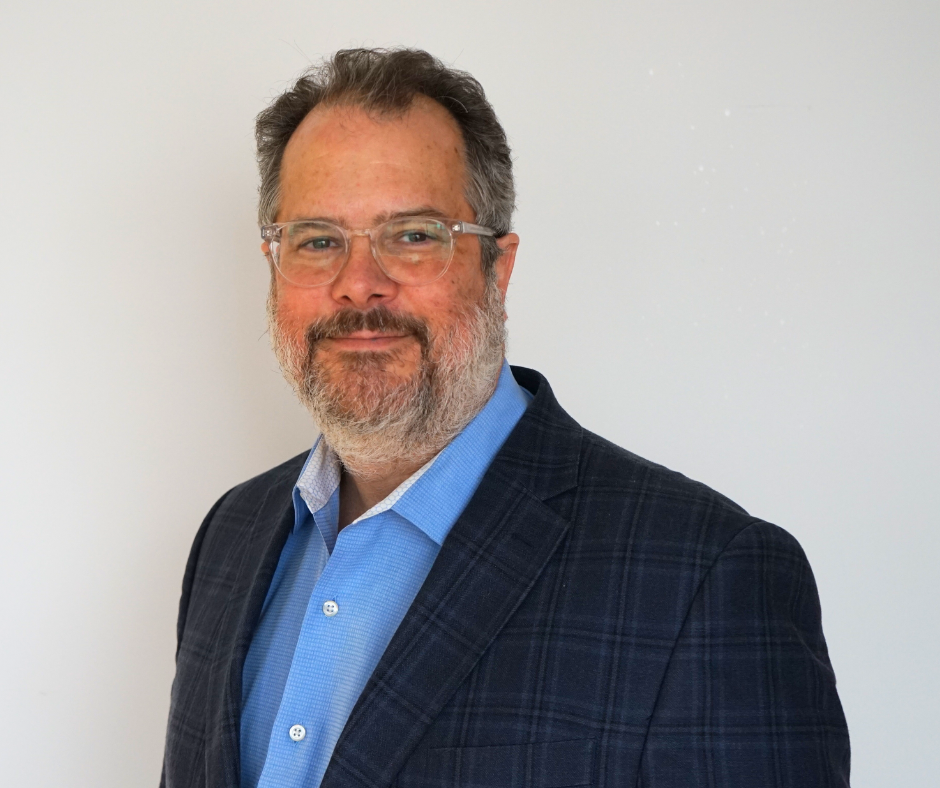
Gonzales was an immigration attorney when The Welcoming Center started in 2003. He saw that the immigration system and public officials, generally, were suspicious of immigrants.
“There’s an orientation to mistrust, or not value immigrants in the immigration system itself,” he said. “But in the nonprofit sector — the world that we work in — it’s all about recognizing that immigrants are contributing in meaningful ways.”
Whereas Philadelphia used to lag behind other large American cities in attracting immigrants, the city is catching up. The population of people identifying as Hispanic or Asian has doubled in 20 years, according to a recent Pew report. Immigrants are about 15% of Philadelphia’s population, that’s slightly above the national average of 13.6%.
Part of what Gonzales has done during his tenure as president and CEO is to encourage The Welcoming Center clients to become leaders within the organization. Clients helped by the center stick around, becoming mentors and project leaders for future initiatives.
“The creativity and innovation that has happened, it happens in large part because of the participants that we’re working with,” Gonzles said. “They have a place where not only do they feel welcome, but they have a say. They have helped shape our thinking about how we design programs.”
One of the unique initiatives of The Welcoming Center is its International Professional Program, where immigrants with a bachelor’s degree (or equivalent) from their home country are assisted in finding work within their field.
“Instead of finding survival jobs, we worked on helping them build their careers,” Gonzales said.
Out of the International Professional Program came the Participant Advisory Panel, with graduates of the IPP who wanted to stick around and assist other immigrants in similar circumstances. Along the way, they are defining what The Welcoming Center is able to do.
“They wanted to help think about how The Welcoming Center could reach into communities that were harder to serve, more isolated,” Gonzales said.
In 20 years, The Welcoming Center has had just two leaders, soon to have a third: in June Gonzales will step down as president and CEO. His replacement has yet to be determined.
“I’m not stepping down because my work is done here,” he said. “There’s a need to replenish and recharge. I am excited about where we’re going.”
WHYY is your source for fact-based, in-depth journalism and information. As a nonprofit organization, we rely on financial support from readers like you. Please give today.



